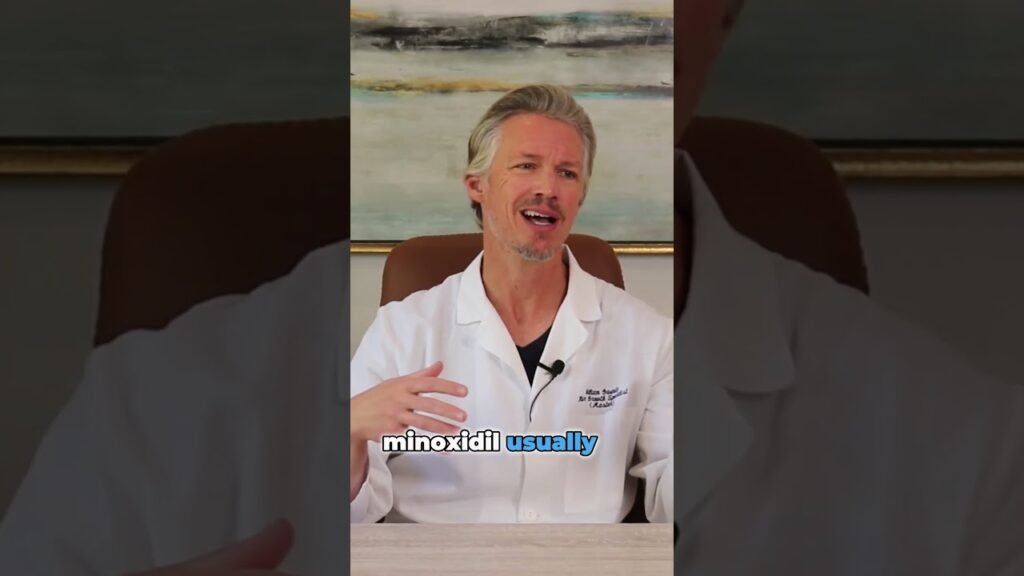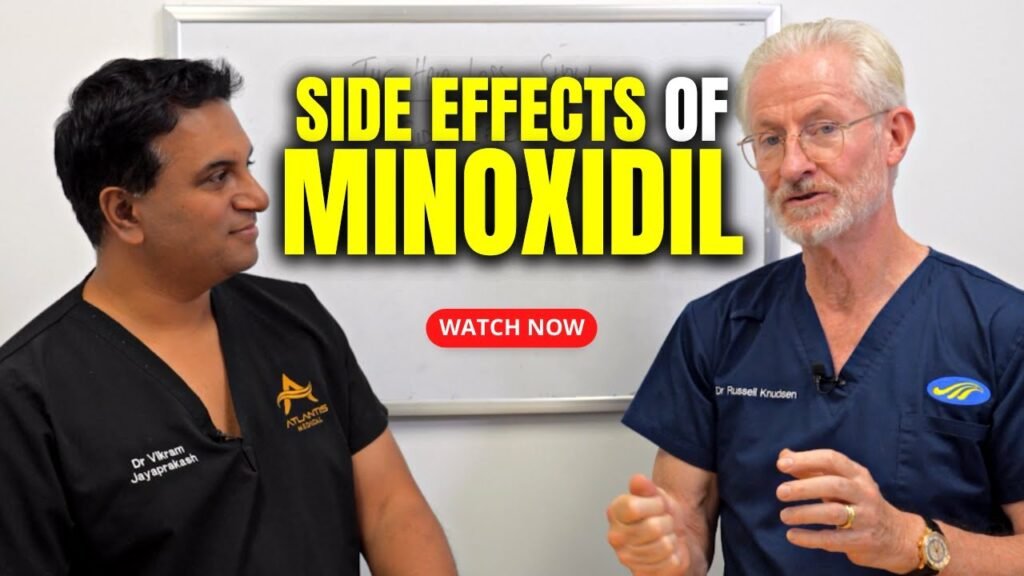Understanding Minoxidil: What It Is and How It Works
Minoxidil is a well-known topical treatment primarily used for promoting hair growth and slowing down hair loss. Originally developed as an oral medication for hypertension, researchers discovered its surprising side effect of hair regrowth, which led to its formulation as a topical treatment. Available in various concentrations, minoxidil is often applied directly to the scalp to stimulate hair follicles, making it a popular choice for individuals experiencing androgenetic alopecia, commonly known as male or female pattern baldness.
How Minoxidil Works
Minoxidils effectiveness lies in its ability to enhance blood flow to hair follicles. By dilating blood vessels, minoxidil increases the nutrient and oxygen supply to the scalp, which can help in revitalizing shrunken hair follicles. This process not only promotes hair growth but also extends the growth phase of hair, known as the anagen phase. As a result, users may experience an increase in hair density and thickness over time.
Application and Usage
For optimal results, minoxidil should be applied consistently, usually twice a day, to the affected areas of the scalp. It is available in liquid or foam formulations, catering to different preferences and scalp sensitivities. Its important to follow the recommended dosage and application instructions to avoid potential side effects such as scalp irritation. Users should be aware that it may take several months to notice visible improvements, and continuous use is necessary to maintain the benefits, as discontinuing treatment can lead to a reversal of hair regrowth.
Does Minoxidil Cause Hair Shedding? The Hidden Risks Explained
Minoxidil, a popular over-the-counter treatment for hair loss, is known for its ability to stimulate hair growth. However, one of the most frequently discussed concerns among users is whether Minoxidil causes hair shedding. The truth is, initial hair shedding is a common and expected phase when beginning Minoxidil treatment. This phenomenon, often referred to as «Minoxidil shedding,» occurs because the medication accelerates the hairs natural growth cycle. This means that older hairs are pushed out to make room for new growth, leading to temporary shedding.
While shedding can be alarming, it is typically a sign that the treatment is working. The shedding phase usually lasts for a few weeks to a couple of months. During this time, users might notice an increase in hair loss, which can be unsettling. However, its important to understand that this process is a normal part of how Minoxidil functions. The shedding should eventually subside, giving way to thicker and more robust hair growth. Users are advised to continue the treatment consistently, as discontinuing could lead to the loss of any newly grown hair.
Potential Risks and Considerations
Aside from the initial shedding, there are other risks and considerations to keep in mind when using Minoxidil. Some users may experience side effects such as scalp irritation, dryness, or itching. In rare cases, more severe reactions can occur, like allergic responses or unwanted facial hair growth, particularly in women. It is crucial for individuals to monitor their reactions to the treatment and consult a healthcare professional if they experience any adverse effects. Additionally, Minoxidil is most effective for certain types of hair loss, such as androgenetic alopecia, and may not be suitable for everyone.
Temporary Shedding vs. Permanent Loss: What to Expect with Minoxidil
When starting Minoxidil, a common concern is distinguishing between temporary shedding and permanent hair loss. Many users experience an initial phase of increased hair shedding, often causing alarm. This phenomenon, known as «Minoxidil shedding,» is typically temporary and occurs as the medication stimulates the hair follicles. During this phase, older hairs fall out to make way for new growth. Its important to recognize that this shedding is a sign that the treatment is working and is usually observed within the first few weeks to months of usage.
Minoxidils mechanism promotes hair growth by prolonging the anagen (growth) phase of the hair cycle. However, distinguishing between temporary shedding and permanent loss is crucial for users. Temporary shedding is a short-term effect and should subside as the treatment continues, leading to thicker and more robust hair over time. In contrast, permanent hair loss can result from genetic factors or underlying medical conditions that Minoxidil may not address. Therefore, monitoring the duration and extent of shedding can help differentiate between the two.
For those concerned about the possibility of permanent hair loss while using Minoxidil, its essential to evaluate other potential causes. Factors such as genetics, hormonal changes, or scalp conditions might contribute to ongoing hair thinning or loss. Consulting with a healthcare professional or dermatologist can provide insights into whether the shedding experienced is part of the normal Minoxidil process or indicative of a more persistent issue. Keeping track of the hair growth cycle and changes in hair density over time can also aid in understanding the effects of Minoxidil treatment.
How to Manage Hair Shedding When Using Minoxidil
Experiencing hair shedding when starting Minoxidil can be concerning, but it is a common part of the treatment process. Understanding how to manage this phase effectively can help ease your worries and enhance your overall hair growth journey. The initial shedding typically indicates that Minoxidil is stimulating hair follicles, pushing out older hairs to make way for new growth. To manage this shedding phase, consistency and patience are key.
Maintain a Consistent Application Routine
One of the most important steps in managing hair shedding with Minoxidil is maintaining a consistent application routine. Apply the recommended dosage, usually twice daily, directly to the scalp. This ensures that the hair follicles receive a steady supply of the active ingredient, helping to regulate the hair growth cycle more effectively. Avoid skipping applications, as this can disrupt the treatment process and prolong the shedding phase.
Incorporate a Gentle Hair Care Regimen
Adopting a gentle hair care routine can minimize additional stress on your hair and scalp during the shedding phase. Use a mild shampoo and conditioner to cleanse your scalp without causing irritation. Avoid excessive heat styling, harsh chemical treatments, and tight hairstyles that can exacerbate shedding. Consider using a wide-tooth comb to detangle your hair gently, reducing the risk of breakage and further hair loss.
Monitor Your Progress and Adjust as Needed
Keep track of your hairs progress while using Minoxidil, and be prepared to make adjustments if necessary. Document any changes in hair shedding patterns, and consult with a healthcare professional if shedding persists beyond the initial few months. They can provide guidance on whether to continue with the treatment or explore alternative options. By closely monitoring your hairs response to Minoxidil, you can make informed decisions and optimize your hair growth strategy.
Expert Tips: Minimizing the Risks of Hair Shedding with Minoxidil
Using Minoxidil can be an effective solution for promoting hair growth, but its essential to use it correctly to minimize the risk of increased hair shedding, which is sometimes a side effect during the initial phases of treatment. Understanding the correct application and maintaining a consistent routine are crucial steps. Experts recommend applying Minoxidil to a clean, dry scalp to enhance absorption and effectiveness. Using the recommended dosage, usually 1 ml twice daily, ensures that youre not overwhelming your scalp, which can sometimes exacerbate shedding.
Consistency is Key
One of the most emphasized tips by dermatologists is maintaining a consistent application schedule. Consistency not only aids in achieving the desired results but also helps in minimizing the transitional shedding phase. Missing applications can disrupt the hair growth cycle, potentially leading to more shedding. Its important to set reminders or incorporate the application into your daily routine to ensure you dont skip doses. Over time, this consistency can help stabilize hair growth and reduce the appearance of shedding.
Monitor and Adjust as Needed
Its also vital to monitor your scalps reaction to Minoxidil. Some individuals may experience irritation or increased shedding initially, which can be a normal part of the process as hair follicles adjust. However, if shedding continues beyond the first few months or if you experience severe irritation, consulting with a healthcare professional is advisable. They can provide guidance on whether to continue with the current treatment or make necessary adjustments. Additionally, incorporating a gentle shampoo and conditioner designed for sensitive scalps can further support your hairs health during this period.


